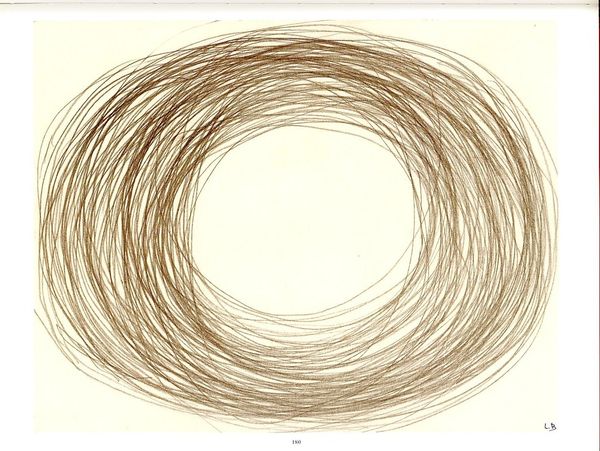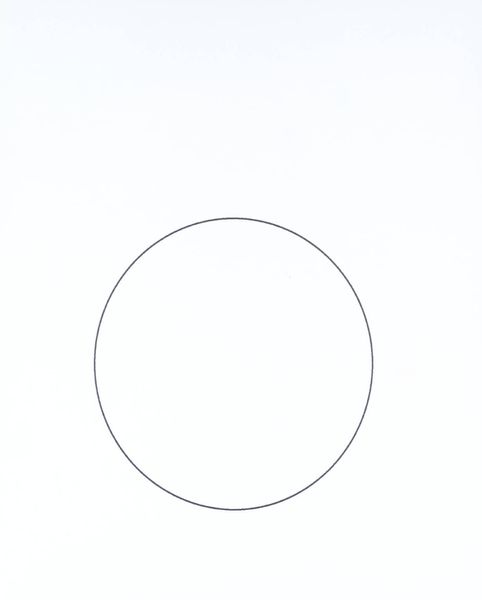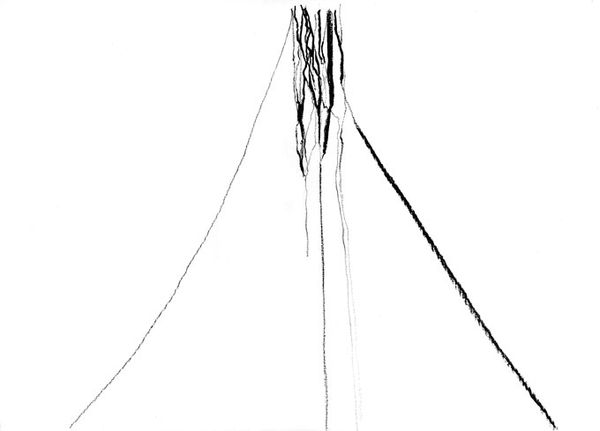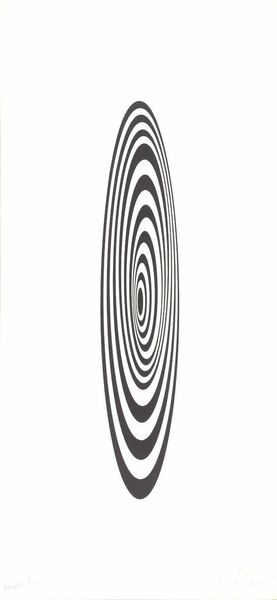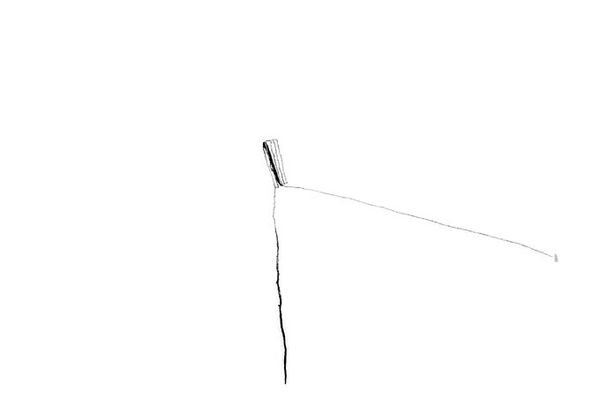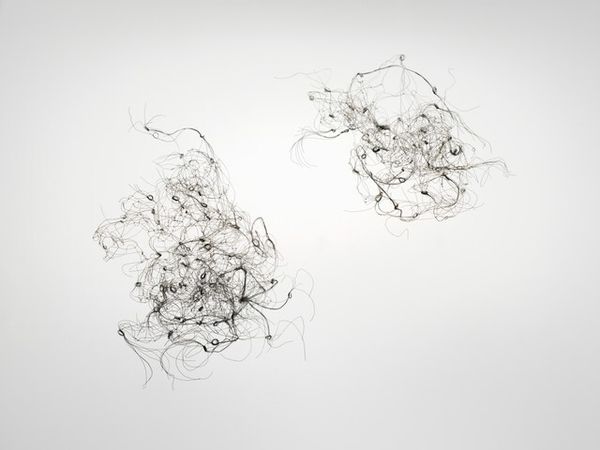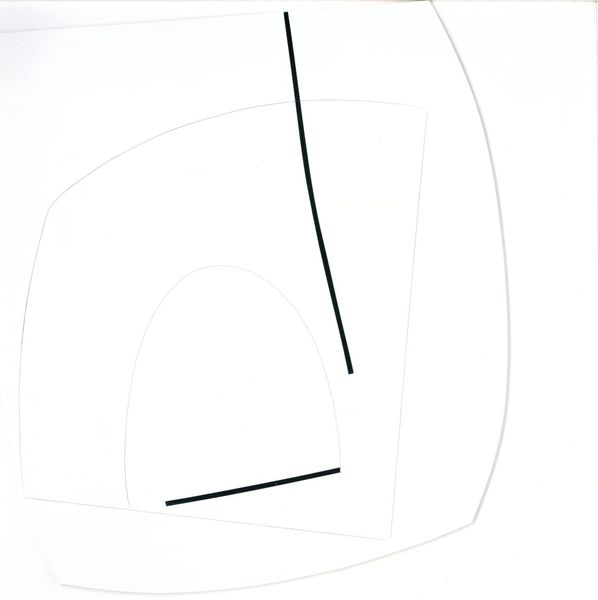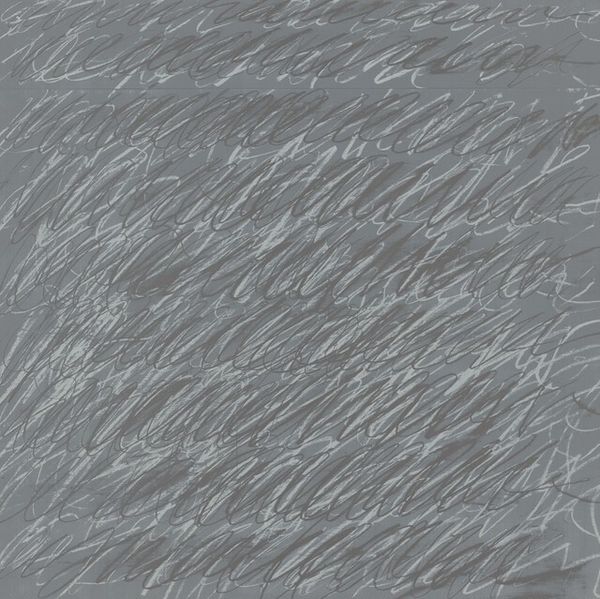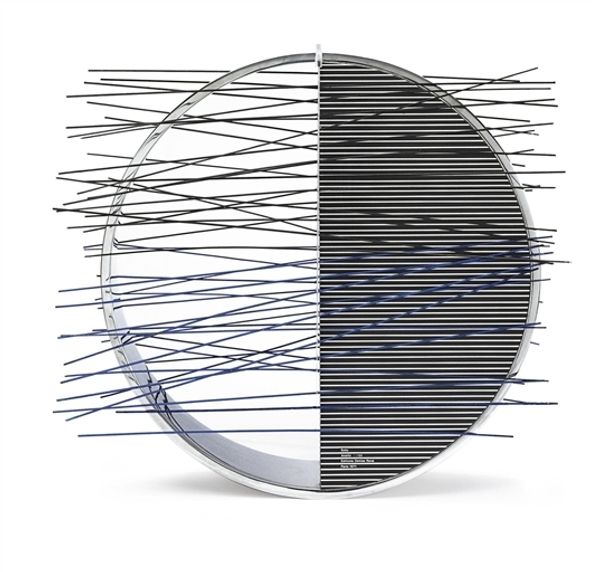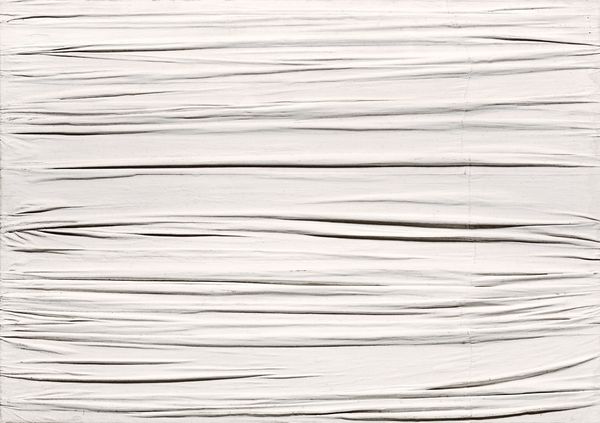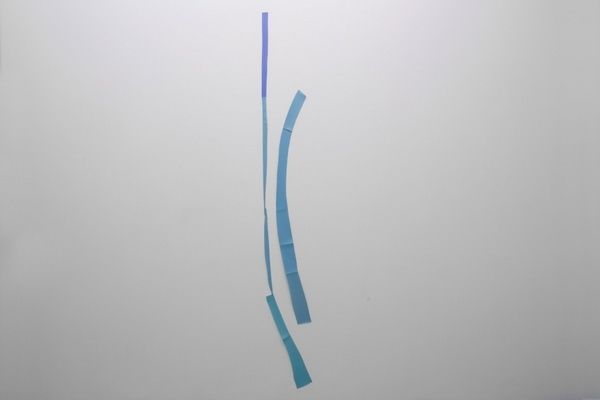
Dimensions: unconfirmed: 260 x 210 mm
Copyright: © Ceal Floyer, courtesy Lisson Gallery, London | CC-BY-NC-ND 4.0 DEED, Photo: Tate
Curator: Welcome. We are looking at Ceal Floyer’s “Etching (at 45 rpm)," held in the Tate Collection. Editor: It’s stark, almost clinical. The lines form a hazy circle, a suggestion more than a solid shape. Curator: Floyer often engages with the relationship between art and technology, and I see this piece as exploring the obsolescence of analogue media. Editor: I see the visual rhythm first. How the delicate lines create a moiré effect, almost vibrating on the page. The materiality of the etching itself echoes the grooves of a record. Curator: Exactly. The title, of course, references the speed of a vinyl record, perhaps commenting on the fleeting nature of cultural trends and consumerism. Editor: I appreciate the simplicity, how it uses minimal means to achieve such a visually engaging and conceptually rich image. Curator: Indeed, and that engagement opens up broader questions around cultural memory and the digital age. Editor: It's a reminder that even in apparent simplicity, there's a depth of artistic intention waiting to be discovered.
Comments
tate 7 months ago
⋮
http://www.tate.org.uk/art/artworks/floyer-etching-at-45-rpm-p78391
Join the conversation
Join millions of artists and users on Artera today and experience the ultimate creative platform.
tate 7 months ago
⋮
Etching (at 45 rpm) is one of twenty works produced by contemporary artists for the Cubitt Print Box in 2000. Cubitt is an artist-run gallery and studio complex in north London. In 2001 the complex moved from King’s Cross to Islington and the prints were commissioned as part of a drive to raise funds to help finance the move, and to support future exhibitions and events at the new gallery space. All the artists who contributed to the project had previously taken part in Cubitt’s programme. The portfolio was produced in an edition of 100 with twenty artists’ proofs; Tate’s copy is number sixty-six in the series.
